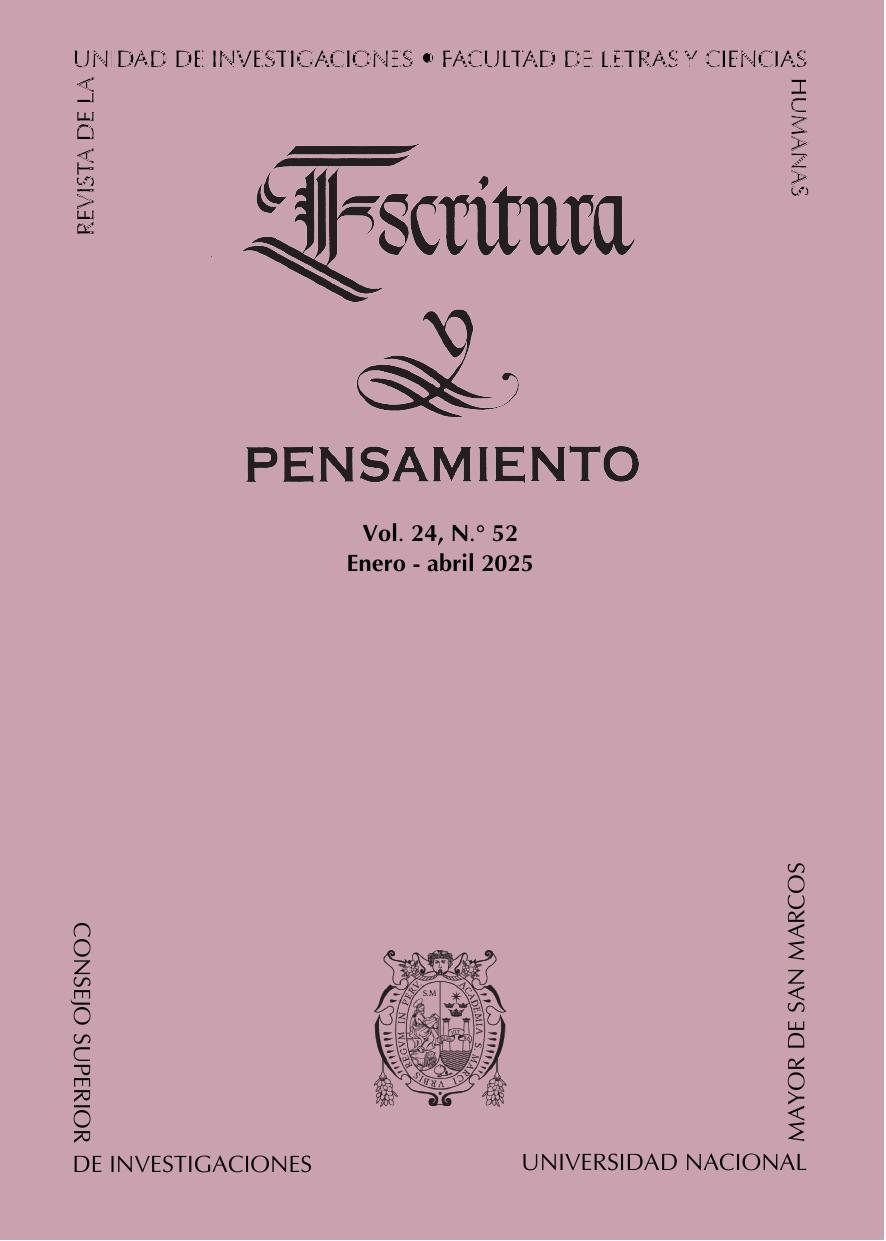The relevance of the literature of political violence within the literary canon
DOI:
https://doi.org/10.15381/escrypensam.v24i52.30189Keywords:
literary canon, political violence, peruvian narrative, peruvian literary fieldAbstract
The present study analyzes the inclusion of literature on political violence in the Peruvian literary canon. The central problem is how this type of narrative, initially marginalized, has managed to position itself in official circuits. The hypothesis states that the literature of political violence has been recognized through mechanisms such as literary criticism and contests, moving from a peripheral position to one of greater acceptance. The methodology used is an analysis of the Peruvian literary field, with special attention to the relationship between institutional and commercial canon, based on theories of Pierre Bourdieu and previous studies on literature and violence. Literary awards, critical reception and the evolution of this subgenre within the publishing system are examined. The article concludes that the narrative of political violence has been consolidated as a legitimate space for the representation of memory and national identity.
References
Alcázar, J. (1998). Harold Bloom y el problema de los cánones literarios. Poligrafías. Revista de Literatura Comparada, 3, (1998-2000), 42-57.
Ansión, J. (1985). Violencia y cultura en el Perú. En F Mac Gregor y J. L. Rouillón, Siete ensayos sobre la violencia en el Perú (pp. 58 – 78). Lima, Perú: Fundación Friedrich Ebert.
Benavides, J. E. (2005). Violencia política y narrativa en el Perú de los años ochenta. Quórum. Revista de pensamiento iberoamericano, 11, 153-162
Bourdieu, P. (1995). Las reglas del arte. Génesis y estructura del campo literario. Barcelona, España: Anagrama.
Bourdieu, P. (2010) Capital cultural, escuela y espacio social. Buenos Aires, Argentina: Siglo XXI Editores.
Braud, P. (2006). Violencias políticas. Madrid, España: Alianza Editorial.
Cox, M. (2000). El cuento peruano en los años de la violencia. Lima, Perú: Editorial San Marcos.
Harris, W. V. (1991). La canonicidad. En E. Sullá, El canon literario (pp. 37 – 60).
Herranz Castillo, R. (1991). Notas sobre el concepto de violencia política. Anuario de Filosofía del Derecho, VIII, 427 – 442.
Honores, E. (2018). Fantasmas del futuro. Teoría e historia de la ciencia ficción (1821- 1990). Lima, Perú: Polisemia. http://revistaargumentos.iep.org.pe/articulos/los-escritores-andinos-la-violencia-y-la-invisibilidad/
Nieto Degregori, L. (2008). Los escritores andinos, la violencia y la invisibilidad. Revista Argumentos, 4.
Pérez Orozco, E. (2011). Racionalidades en conflicto. Cosmovisión andina (y violencia política) en Rosa Cuchillo de Óscar Colchado. Lima, Perú: Pakarina Ediciones.
Sullá, E. (1998). El canon literario. Madrid, España: Arco Libros.
Terán Morveli, J. (2017). La narrativa de la violencia en el Perú: Una primera tipología. Entre Caníbales, 5, pp. 75 – 98.
Terán Morveli, J. (2018). Memoria y literatura en la novelística de Julián Pérez. A propósito de Anamorfosis. En E. Pérez Orozco y J. Terán Morveli, Cuadernos Urgentes. Julián Pérez (pp. 195 - 222).
Downloads
Published
Issue
Section
License
Copyright (c) 2025 Jeremías Brayan Martínez Rodríguez

This work is licensed under a Creative Commons Attribution 4.0 International License.
AUTHORS RETAIN THEIR RIGHTS:
a. The authors retain their trademark and patent rights, and also over any process or procedure described in the article.
b. The authors retain the right to share, copy, distribute, execute and publicly communicate the article published in the Escritura y Pensamiento (for example, place it in an institutional repository or publish as part a book), with acknowledgment of its initial publication by Escritura y Pensamiento.
c. Authors retain the right to make a subsequent publication of their work, to use the article or any part of it (for example: a compilation of their work, lecture notes, thesis, or for a book), provided that they indicate the source of publication (authors of the work, journal, volume, number and date).





